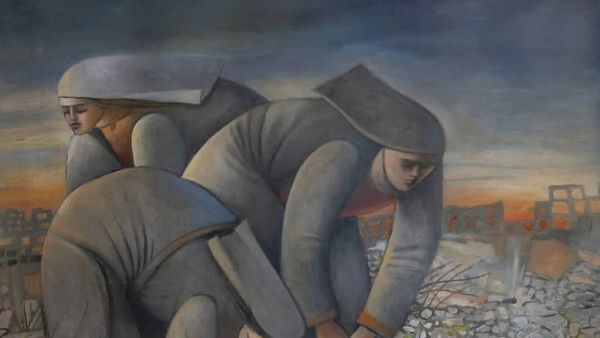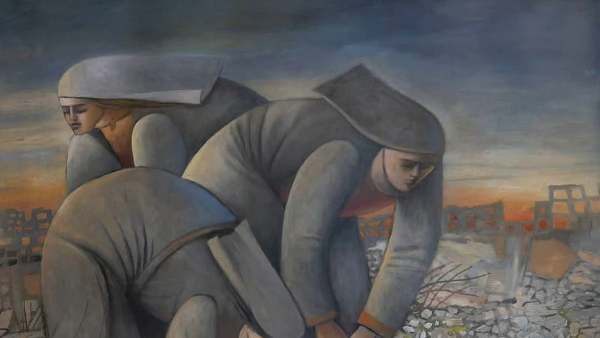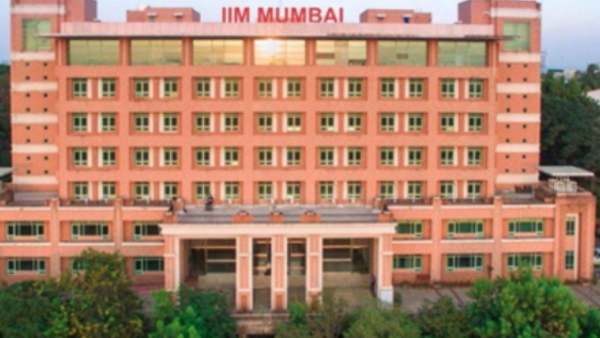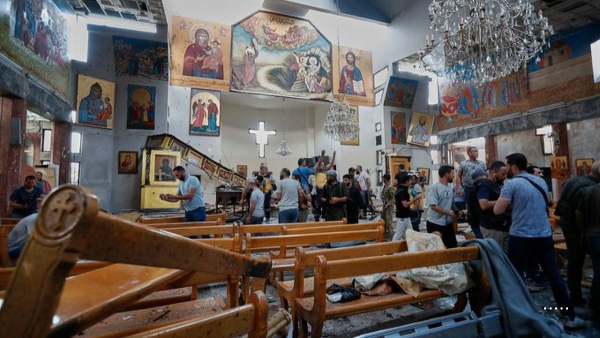

The war in Gaza is being live-streamed, arriving in waves of brutal imagery—bombings, bloodied bodies, and the unfathomable grief of displacement and loss. In a world saturated with such visual violence, how does one make—and, more importantly, witness—art? The exhibition The Body Called Palestine, on view at Jawahar Bhawan and organised by the Safdar Hashmi Memorial Trust (SAHMAT), is a step towards forging artistic and civic solidarities “against the unprecedented war unleashed on Palestine by Israel”, says its curator Amit Mukhopadhyay. The attempt is to “bring the Arab world back into our cultural imagination”, at a time of its near-disappearance in mainstream art and political discourse.
The show assembles a powerful collective voice of over 70 artists from Palestine, India, and across the world in solidarity with Palestine’s struggle for freedom, identity, and survival. It sets the tone for a new vocabulary of resistance through the aesthetics of viewing artistic production as protest in the face of annihilation.
As it is currently impossible to transport artwork out of Gaza, and many Palestinian artists today are part of the diaspora, scattered over the world, all of the pieces in the show have been facilitated through digital prints. In that sense, The Body Called Palestine reclaims memory and testimony as urgent.
Memory, land, resistance
Palestinian artists in this exhibition confront the Zionist settler-colonial framework head-on. “This exhibition also shows that they are human beings, they look at landscapes, they yearn for home—and that Palestine is where they live and have a life,” says Subba Ghosh, one of the presenting artists. It is irrefutable that Palestinians narrate their history themselves. As Edward Said had said, marginalised artists speak “from the position of knowledge and authoritative learning,” born of subjugation. Art, then, becomes an act of deconstruction—of inherited frameworks, imposed boundaries, and imperialist visual taxonomies.
Sliman Mansour, whose work has come to symbolise Palestinian national identity and communal resilience, presents Searching for life, an oil on canvas depicting women salvaging the remains of shattered homes and histories. “This is a powerful work. It has an almost Soviet appeal, being very Constructivist in the manner of building together from ruins,” remarks Aban Raza, an Indian artist.
In Last Breath, Malak Mattar, a young artist in her twenties, offers a Guernica-like lamentation for Gaza. The city’s streets, hospitals, and homes are reimagined in hellish hues. The London-based artist recalls being paralysed at the onset of the current war: “I could not hold a piece of paper or paint or look at paintings. Nothing had meaning.” And yet, through this anguish emerges a refusal to forget.
A shift of presence and absence recurs throughout. Ghosts of Presence / Bodies of Absence by Palestinian-American artist John Halaka evokes Palestinian refugees as spectral witnesses, floating in “unsolidified fields of dreams”, displaced yet tethered to their erased villages. His drawings become mnemonic devices, reconciling memory and geography, reuniting stolen lands with their dispossessed people. Mary Tuma’s Homes for the Disembodied furthers this idea—offering textile sculptural sanctuaries to spirits of the exiled.
Sobhiya Hasan Qais’s Self Portrait and Cactus in a Jar reflect gendered memory through the motif of the sabra plant. A historic symbol of Palestinian endurance, the sabra was once used to demarcate peasant land boundaries. In the jar it becomes suffocated in containment—lonely and wounded, symbolising the people of the land.
Equally striking are works like Dima Srouji’s delicate glass jars. These fragile vessels, almost vanishing in their transparency, carry the burden of refugee life. “She presents the line so faintly it could disappear at any moment.” The fragility of her work mirrors the precarity of existence for Palestinian people under settler-colonial regimes.
And then there is the work of Abdul Rahman Katanani, rendering the Gaza Sea in barbed wire. The sea, once a space of openness, is transformed into a weapon of control.
Far from Gaza
For Indian artists responding in solidarity, the dilemma was not just how to strike the tone of representation, but of acknowledging the distance. “The images made by non-Palestinian artists are largely embedded in international politics,” says artist Anupam Roy, a propagandist artist, cautioning against the trap of symbolic clichés like the watermelon. “The real challenge,” he adds, “is to acknowledge the distance of being far from Gaza and still not remain silent.”
Artist Subba Ghosh, in his Flow series, confronts the violence of migration. His black-and-white drawings depict an Israeli soldier dragging a Palestinian away, representing the dehumanising force of expulsion. “Displacement is a form of violence,” he says. His work speaks to the aridness of dislocation, the disorientation of exile.
Meanwhile, Raza insists, “Exhibitions also help us as artists to deal with what we can’t control. Instead of becoming a pot of cynicism, they help us remember, and resist.” In today’s context, even the most basic gesture of staging an exhibition is seen as bold. “It’s the least we can do.”
That such an exhibition can be mounted at all, amid increasing state censorship, erasures, and silence, is its own form of collective utterance. Art historian and professor Shukla Sawant notes, “In times when you think nobody is speaking, exhibitions like this show you that there are people speaking up.”
SAHMAT’s curatorial ideology, rooted in India’s anti-colonial legacy, positions Palestine as part of a shared struggle. “This issue has to be part of our daily discourse,” Mukhopadhyay insists. In the end, The Body Called Palestine is a call to remember, a wager on hope, and a belief in creative acts to interrupt tyranny, reimagine justice, and the possibility of collective rising. Bertolt Brecht’s epigram, “In the dark times, will there also be singing?” is answered by this exhibition. There will be singing. About the dark times.
The exhibition is on view till June 30, 9.30 am to 7 pm, at Jawahar Bhawan, New Delhi.
-
Masterstroke by Gautam Adani, launches India’s 1st…, achieves milestone towards national mission of…

-
IIM Mumbai Emerges As A Global Beacon Of Innovation And Entrepreneurship; Details Here

-
At Least 19 Killed In Damascus Church Suicide Bombing; IS Claims Responsibility For Attack

-
NIFT Final Result 2025 Declared At exams.nta.ac.in/NIFT/; Get Direct Link Here

-
Ludhiana West bypoll: AAP's Sanjeev Arora leads with over 14,000 votes
